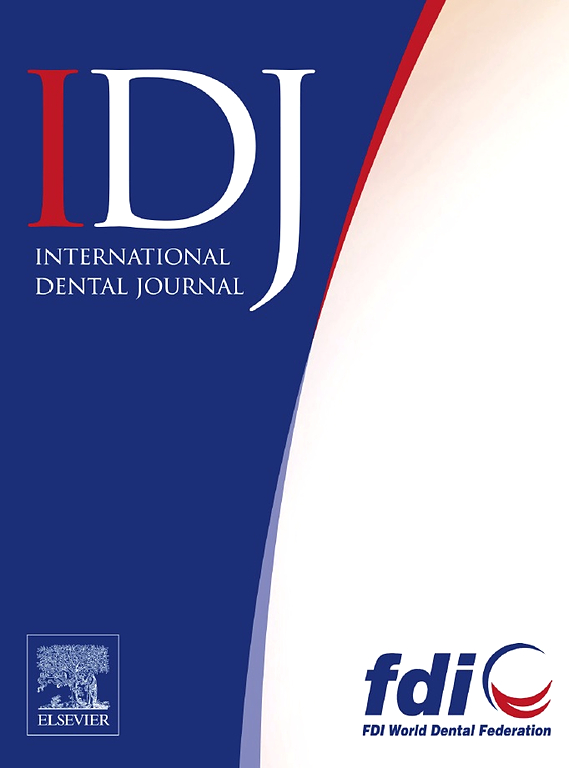Diagnostic Value of Panoramic Radiographs in the Assessment of Degenerative Joint Disease: A Retrospective Study
IF 3.7
3区 医学
Q1 DENTISTRY, ORAL SURGERY & MEDICINE
引用次数: 0
Abstract
Introduction and Aims
This study evaluated the potential of panoramic radiographs (PR) for assessing temporomandibular joint (TMJ) osseous changes compared to Cone-beam Computed Tomography (CBCT). Our ultimate goal is to understand the value of PR as a screening tool and to get guidance for when CBCT should be requested for further investigation.
Methods
This cross-sectional retrospective study included patients 18 years or older with a PR and CBCT of TMJ from the School of Dentistry, University of Alberta, between 2021 and 2024. Exclusion criteria included poor image quality, an interval between PR and CBCT over 6 months, and TMJ not fully captured. Assessed findings from the images included condyle and articular eminence flattening, altered size, osteophyte formation, sclerosis, and erosion. Statistical analyses verified the diagnostic accuracy of PR in identifying TMJ degenerative findings compared to CBCT, the reference standard.
Results
One hundred and two TMJs from 51 patients (40 females and 11 males) were included in the study. PR sensitivity was below diagnostic thresholds recommended by current guidelines, ranging from 0 to 0.57, with only condyle flattening (0.55) and condyle altered shape/size (0.57), with a sensitivity above 0.50. A true negative was the most frequent score for all osseous findings except for flattening the condyle, with a high true positive in 32.25% of the cases. The specificity of PR ranged from 0.71 to 1.00.
Conclusion
PR is an opportunistic screening tool but does not meet sensitivity thresholds to serve as a stand-alone diagnostic method for TMJ DJD. Abnormal findings seen in the PR should prompt CBCT to confirm osseous pathology.
Clinical Relevance
PR is widely used in dental practice and may reveal gross TMJ abnormalities. When these findings align with clinical signs or symptoms, CBCT should be considered for further assessment. This approach supports earlier detection of DJD while adhering to the ALADAIP principle.
全景x线片在评估退行性关节疾病中的诊断价值:回顾性研究
前言和目的本研究比较了全景x线片(PR)与锥束计算机断层扫描(CBCT)在评估颞下颌关节(TMJ)骨性变化方面的潜力。我们的最终目标是了解PR作为筛查工具的价值,并为何时需要CBCT进行进一步调查提供指导。方法本横断面回顾性研究纳入阿尔伯塔大学牙科学院2021 - 2024年间18岁及以上的颞下颌关节PR和CBCT患者。排除标准包括图像质量差,PR和CBCT间隔超过6个月,TMJ未完全捕获。影像学评估结果包括髁突和关节隆起变平、大小改变、骨赘形成、硬化和糜烂。与参考标准CBCT相比,统计分析证实了PR在识别TMJ退行性表现方面的诊断准确性。结果51例患者共102例tmj纳入研究,其中女性40例,男性11例。PR敏感性低于现行指南推荐的诊断阈值,范围从0到0.57,只有髁突变平(0.55)和髁突形状/大小改变(0.57),敏感性高于0.50。除髁突扁平外,所有骨性检查结果的真阴性是最常见的,在32.25%的病例中真阳性很高。PR的特异性为0.71 ~ 1.00。结论pr是一种机会性筛查工具,但不符合敏感性阈值,不能作为TMJ DJD的独立诊断方法。PR的异常表现应提示CBCT确认骨性病理。epr在牙科实践中广泛应用,可显示颞下颌关节的大体异常。当这些发现与临床体征或症状一致时,应考虑CBCT进行进一步评估。这种方法支持早期检测ddd,同时坚持ALADAIP原则。
本文章由计算机程序翻译,如有差异,请以英文原文为准。
求助全文
约1分钟内获得全文
求助全文
来源期刊

International dental journal
医学-牙科与口腔外科
CiteScore
4.80
自引率
6.10%
发文量
159
审稿时长
63 days
期刊介绍:
The International Dental Journal features peer-reviewed, scientific articles relevant to international oral health issues, as well as practical, informative articles aimed at clinicians.
 求助内容:
求助内容: 应助结果提醒方式:
应助结果提醒方式:


